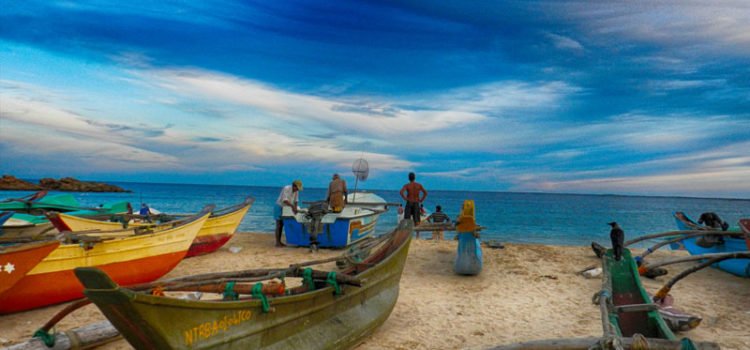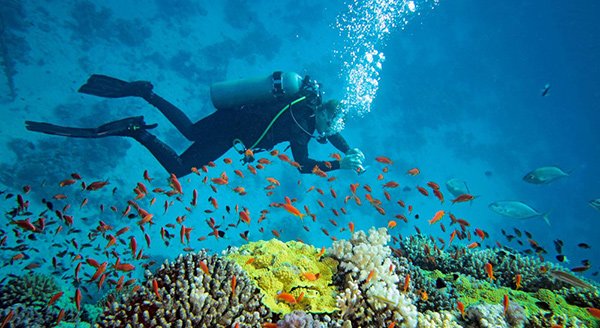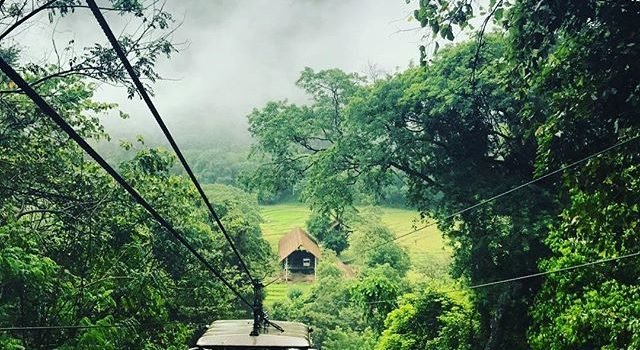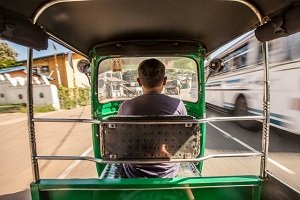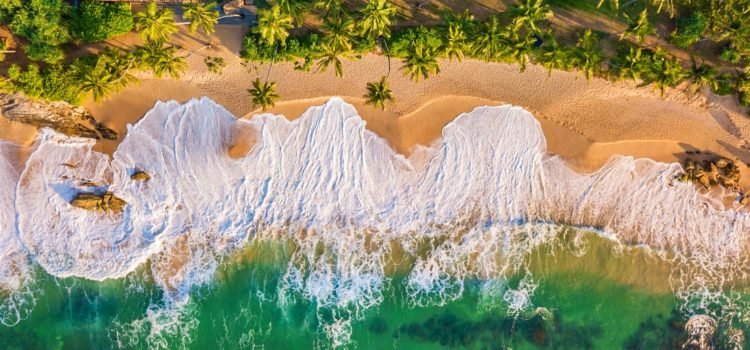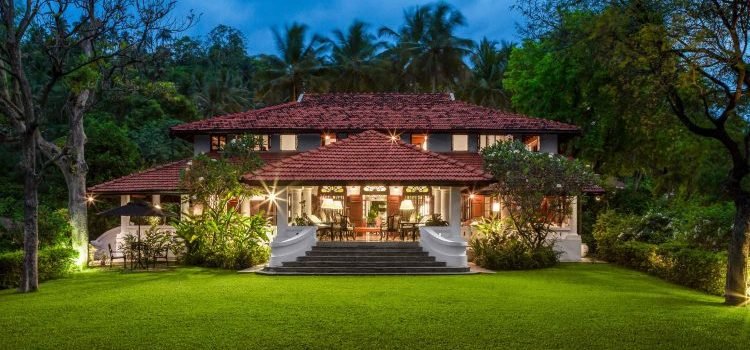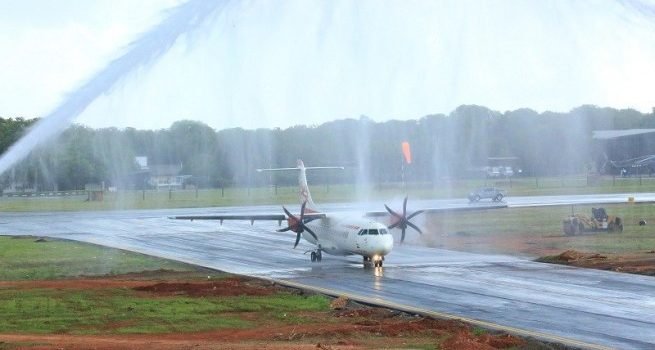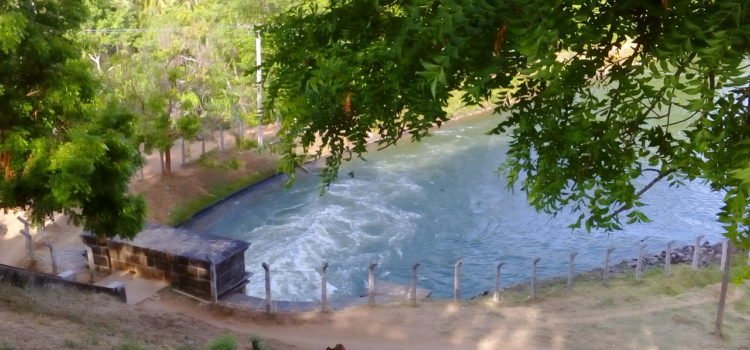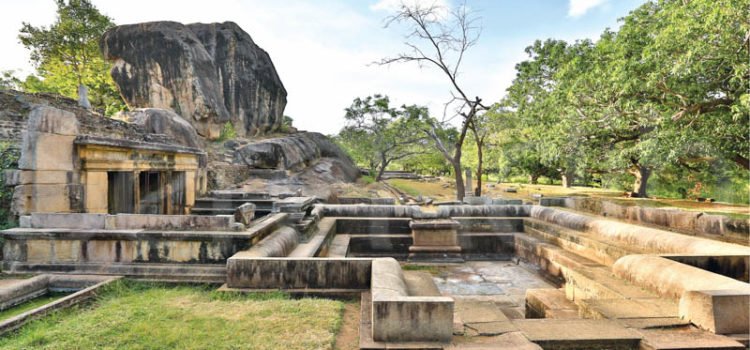Traveling to Trincomalee
Trincomalee is one of the finest natural deep water harbours in Sri Lanka and it is located 257 km north-east of Colombo and considered as a commercial hub of Sri Lanka. Trincoamlee is home for some of the finest beaches of Sri Lanka. Beaches like Nilaveli, Uppuweli and off shore Pigeon Island makes it’s a major tourist attraction for the beach lovers of Sri Lanka. Trincomalee had its own whale watching places in the Indian Ocean and becoming popular day by day. The beaches in Trincomalee and its crystal clear water offers tourists diving, snorkeling and swimming. Trincomalee is studded with a multitude of ruins of ancient Buddhist temples and is considered a major Buddhist cultural and archaeological site of Sri Lanka and same time its home to some of ancient Hindu Temples such as “Koneshwaram”. The Hot water springs of Kinniya is merely few miles away from Trincomalee. Trincomalee is basically a one stop tourist hotspot of Sri Lanka.
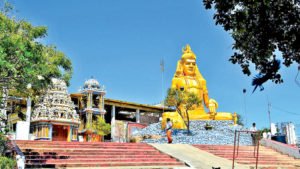
Trincomalee Beach
Trincomalee also known as Gokanna is the administrative headquarters of the Trincomalee Districts and major resort port city of Eastern Province of Sri Lanka.Trincoamalee beach is one of the natural finest deepwater harbours in the world. The Trincomalee area was most known in Anuradhapura and Polonnaruwa Period as a port which attracted persons like “Marco Polo” and “Ptolemy.
Other than that there is the Fort Fredrick that was built by the time of British Empire and it’s in the prefect shape to this day. The famous Lovers leap rock is inside the. As for the religious monuments the “Koneshwaram” Hindu Kovil is there it’s one of the oldest Hindu Kovils of the Island.
If we speak about the beaches in the Trincomalee they are wide clean and water is crystal clear and most famous and place that is not to miss is Marble Beach of Trincomalee . About 16 km further north you’ll find yourself in “Nilaweli” beach with the famous Pigeon Island, the corals around the island is a great place to snorkel in our opinion and red rocks lying just 2 km offshore are reachable by small boat. The village of “Kanniyai” holds 07 wells that contain water from moderately warm water to very hot they are famous for their medicinal properties.
In our opinion Trincomalle has everything on offer whether it be a beach stay, diving to a shipwreck, snorkelling in crystal clear water, whale watching across the bay, kite surfing all this in city built on a headland, which naturally protects the massive harbour behind it, also a naval station of Sri Lanka navy.
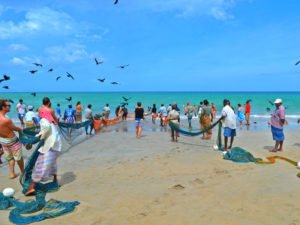
Pigeon Island Snorkeling
If you are a snorkeling enthusiastic this is one of best places in Sri Lanka to indulge in water activities. Pigeon Island is nested coastal shore of Eastern province of Sri Lanka.The Pigeon Island National Park is one of the best places where corals grow. The name comes from a large number of rock pigeons used to inhabit the island. The island was declared as a sanctuary in 1963 and upgraded to a national park in 2003.
You can reach Pigeon Island from Nilaveli from about 15 minutes from a boat with a boat trip operator. As a result of being located in Nilaveli Tourist attraction point tourist who comes to Nilaveli never forgets to visit Pigeon Island. Dive and Snorkel in the seas of Pigeon Island which is full of vivid colour corals and fish. As you snorkel in the Pigeon Island sea you will see green turtles, blacktip reef sharks, olive ridleys and hawksbill turtles swimming over the coral reefs. Today the islands have been identified as a breeding place of the pigeons, therefore, the zone is administrated and conserved by the Sri Lankan navy and the department of wildlife conservations.
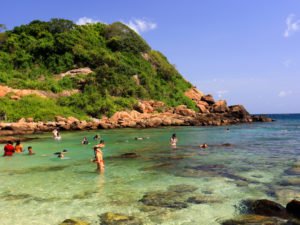
Catamaran Sailing Trip In Trincomalee
Set out on an ultimate catamaran trip in pristine beaches of Nialveli. After getting on board you can head to pigeon island National park which is a marine park where there is great underwater scenery, sunny weather and ideal wind conditions. You can go snorkeling, paddle boarding, surf or just have a sunbath . It’s a lovely way to start the day if it’s a day tour and probably a good way to end the day if it’s a late evening trip.
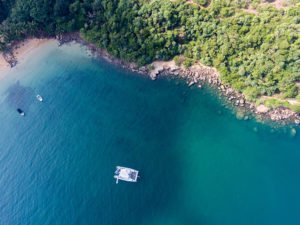
Scuba Diving in Sri Lanka
Sri Lanka has several fantastic scuba diving spots along its west and south coasts, as well as some in Trincomalee in the north-east. From mysterious shipwrecks and distinctive rock formations to a variety of marine life, including numerous species of brightly-coloured tropical fish, eels, marine turtles and sting rays, exploring the island’s underwater world is highly rewarding. Below we have outlined the best dive sites between Kalpitiya in the north-west and Sri Lanka’s southern-most point. This stretch of coastline is in season from November – April.
Weligama
Situated in the Deep South, Weligama is excellent for snorkelling and diving with beautiful undersea rock formations and a variety of marine life. The dive sites include Mirissa Point, Bridge Rock, Yala Rock, and Prince Heinrich Patch. There is also a 40km reef known as The Basses which starts 20km south east of Kirinda and extends right below Kumana. With sandstone reefs, ravines, pillars, pinnacles, caves, crevices and ship wrecks, The Basses is considered the best diving site in Sri Lanka.
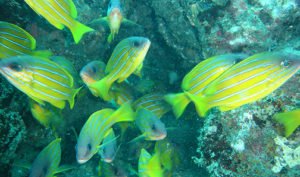
Unawatuna
Diving in Unawatuna is fascinating, with diving sites consisting of rocky formations and black coral, many ship wrecks and numerous varieties of fish.
Hikkaduwa
Hikkaduwa is an interesting youthful coastal town and has about 20 dive sites within easy reach. There are also PADI dive centres, so if you’re staying in Sri Lanka long enough you could get your license here. A deep rocky formation called Deep Rock, Kiralagala, and the ship wreck Conch are interesting dives.

Negombo
Diving sites are divided into two sections in Negombo – closer dive sites, which are within 8km from the shore, and Third Reef which is about 22km from the beach. In all sites, numerous species of fish, marine turtles, Moray Eels and sting rays can be spotted.
Kalpitiya
February through April is the best time for diving off Kalpitiya. The Bar Reef that surrounds Kalpitiya has intricate nooks and crevices and is ideal for spotting Moray Eels, large Grouper Fish and Sting Rays.
Sri Lanka’s cable car is Ella’s best kept secret
Sri Lanka’s hill country offers thrills, excitement and inspiration to all. But in Sri Lanka an exciting cable car ride was the last thing on my mind. Little did I know I was about to hop onto a cable car and soar through the skies.
Our destination on a cold morning was Ella Jungle Resort – an oasis of serenity tucked away in a quieter part of Ella and surrounded by a thick canopy of jungle. From the entrance of the resort, transport in a four-wheel jeep is preferred. So, we hopped on a jeep and set off on our way. The road leading to the quaint resort began smoothly. As we progressed further, however, it became rugged and bumpy.
Bend after bend, I held on to the seat as the jeep swerved, enjoying every moment. I was stunned when I saw a drifting cable car as our driver stopped the jeep in front of a small wooden platform. The road had come to a dead end so he had no choice. He signalled us to get off and directed us to the wooden platform.
Intrigued, I watched the cable car gliding slowly towards the platform where we were standing. Soon the little cabin came to a grinding halt. High above us, a happy couple jumped on to the wooden platform, bidding adieu to Ella Jungle Resort.
Finally, it was our turn to ride the cable car – my very first time. Excited like a kid anticipating an adventure, I quickly hopped on. But the moment I looked down, I could feel a little adrenaline rush coursing through my veins. The vast expansion of the canopy looked like a giant patchwork quilt of various shades of green.
Once the three of us were comfortably seated, the guy in charge of the cable car joined us and closed the little side door of the cabin. As our journey began, we were awed by the picturesque view of the silvery Kirindi Oya snaking amidst the greenery. My cheeks blushed against the cold breeze and my hair danced in the air. We were thrilled as we effortlessly floated through the thin air.
The cable car steadily glided above the Ella jungle and we spotted another empty cabin moving towards the opposite direction. The two-wire cable line stretches across 400 meters and is the only one of its kind in Sri Lanka. The only way to reach the resort is to take the cable car, which comes totally free of charge.
To our dismay the lobby of the resort appeared quicker than we would wished and I reluctantly stepped out of the cabin. A bright-eyed man sat in front of a massive crown wheel facing the entrance of the reception. He greeted us with a warm smile and introduced himself as the cable car operator.
Having visited so many hotels in my life, I must say it was a novel experience to walk into a lobby housing a cable car operating base. As the cable car operator explained, for over two decades the two manual cable cars of Ella Jungle Resort have been drifting back and forth to carry their discerning guests.
Excited by the prospect of taking the cable car ride again, we walked past the lobby to explore the beautiful nature resort. The best kept secret in Ella: this is sure a thrilling experience that should not be missed.
A Tuk-tuk Adventure
Though I was born and bred in Sri Lanka, this little teardrop shaped island does not fail to amuse me every single day. It was a boring Sunday afternoon and my curious little mind was up to no good. Just like those sudden cravings for a mug of steaming hot chocolate, I was desperate to explore Colombo in a tuk-tuk and gobble up some yummy isso vadei.
Soon I was whizzing along the Independence Avenue zig zagging past throngs of vehicles. I had a rough route in mind and my tuk-tuk driver was an easygoing chap. We turned off at the junction and our first stop was the Independence Square.
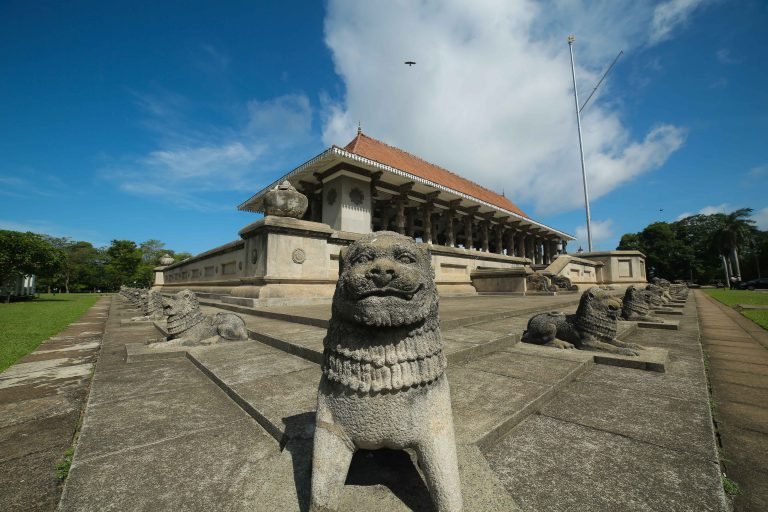
The stately Independence Square
The sun was bidding adieu to the day casting a golden glow on the city. Flanked by elegant lions, the Independence Square is one of those places where memories of the country remain enshrined for all time, in monuments of stately beauty. The Independence Memorial Hall is built in the centre of the premises, marking the site where the island gained independence from British colonisers years ago.
Like a lost child, I wandered into the lush greens of the Independence Square and sat awhile to indulge in this oasis of serenity in the heart of Colombo. Here’s the pro tip: if you ever want to spend some time away from the hubbub of the city, just head to the Independence Square, you’d be surprised.
Happy teenagers were racing each other with glee, making me want to dust off my own cycling gear and pedal by the lanes; maybe next time though, because this was supposed to be my tuk-tuk adventure. So I motioned my tuk-tuk to pick me up and was back on the road. We tuk-tukked along the bustling streets and stopped at the Gangaramaya Temple, which was my next stop.
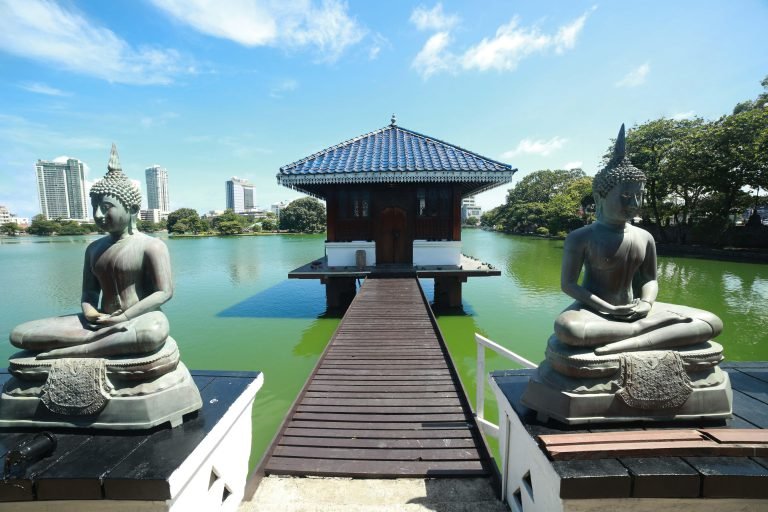
The serene Seema Malakaya on the Beira Lake
As I entered the temple grounds, a blanket of tranquility spread over me, which seemed to foretell the peace and serenity I would find within the premises. The architecture of the temple represents the old and the new along with East Asian influence. I walked towards the museum of the temple, where amidst shelf upon shelf of intricate statues, dazzling tiny ornaments and beautiful marble work, for one bewildering second I felt like Aladdin on his quest to find the magic lamp. There are objects d’art to feast the eyes on from the floor to ceiling!
I walked out of the temple and towards the Seema Malakaya, which belongs to the Gangaramaya but is located across the road, on the Beira Lake. It’s the kind of place that draws you in, and once inside, it’s hard to leave. The hustle and bustle of the outside world grinds to a halt. Unwillingly, I decided to hit the road again and head to my next location- Pettah. If you ever enjoy being jolted out of yourself even for a few minutes, Pettah may just do that for you.
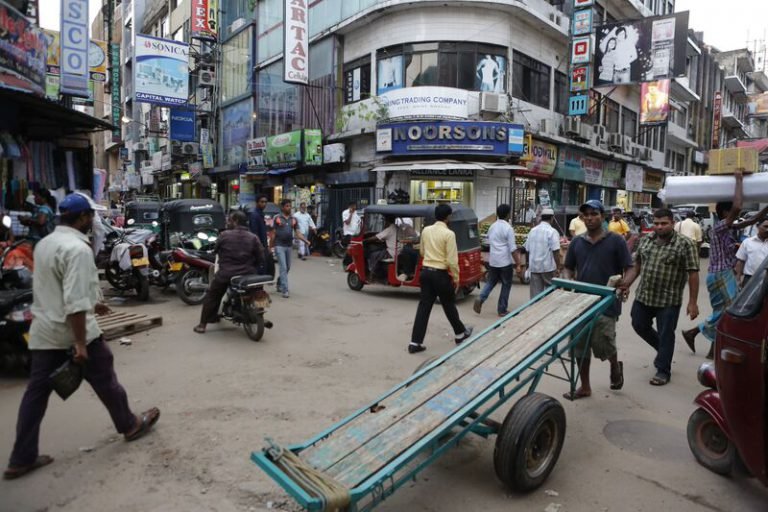
Pettah-a hive of activity
I hopped off the tuk-tuk and made my way to Pettah market. The closer I came to the thriving trading areas, the thicker the traffic and the number of people walking on the streets. It is an area of sensory-overload. You must walk along its streets to realise the amount of activity that goes on, which is far more than any other area on the island.
Half way through the street, I was overwhelmed by a crazy range of noises, aromas and continuous movement. From groceries to fabrics, spices to cooking utensils and sweets to toys, Pettah has anything and everything. Amidst all of its clutter, there is a sense of meticulous space allocation. Products are clustered into various areas within the small lanes that stem from the Main Street.
I was stunned to catch a glimpse of a mosque with candy-striped pillars in the midst of this economic nerve centre of the island. Locally known as the Red Mosque, this eye-popping building was built in 1908. Architects claim the Red Mosque aka Jamiul Alfar Masjid to be reminiscent of the Jamek Masjid in Kuala Lumpur, Malaysia. Being an avid Instagrammer, I did not forget to stop by to take a quick selfie to spice up my Insta feed.
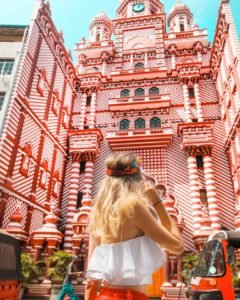
The vibrant Red Mosque in Pettah
Tired yet satisfied, I left the vibrancy of Pettah. If you wish to walk the streets of Pettah, make sure that you are guided by a local. As mentioned it’s a maze of streets, and it’s not easy to crisscross these streets, unless you are familiar with the local neighbourhood.
The grand finale of my tuk-tuk ride around Colombo was the Galle Face Green because crazy as I was, I still wanted to grab some isso vadei – prawns deep fried on a crispy batter. Trust me, even the fine dining aficionados will be tempted to take a quick bite of this island favourite.

Isso vadei is a salty treat!
As the evening drew to an end, the city was illuminated with street lights and was as busy as ever. With a paper bag full of crunchy isso vadei from the Galle Face Green, I hopped back into the tuk-tuk and headed home as happy as a pig in mud.
Five best beaches in Sri Lanka away from the crowds
Hiriketiya
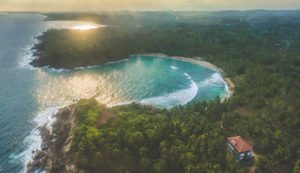
Hidden along the South Coast, amongst swaying palms and clifftops, this secluded cove is ideal for surfers, although only hardy surfers would dare to approach the rougher waves at the edges of the inlet.
Also known as the “Blue Beach”, Hiriketiya remains off-the-radar due to its small size and remote location. The clear blue water is shallow and protected by two headlands and is great for a refreshing dip. This secret clove is now rapidly becoming more known as Conde Nast Traveller has named it the lastest nomad hotspot in srilanka.
Getting there: Hiriketiya is only a kilometre or so from Dickwella. A tuk-tuk ride from Dickwella is the easiest way to visit the beach. You can also catch a regular bus from Matara/Tangalle from around 6am until 6.30pm as all pass through Dickwella.
Polhena
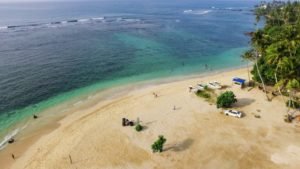
The beautiful beaches in Matara can be overrun in the peak-season but Polhena is a charming sandy cove and, surprisingly, never too busy.
An offshore reef barrier stands like a giant to protect Polhena from rough waves. Thus, the sea is super calm and shallow. The vivid-blue-green of the water against the golden sands create picture perfect moments.
Interestingly, the beach is dotted with tiny pieces of corals that wash ashore every now and then. Polhena is an idyllic spot for snorkeling to discover its kaleidoscopic spectrum of vibrant tropical fish and corals. The beach is extra quiet on weekdays. Polhena is one of the safest beaches for kids.
Getting there: Polhena is a 2km drive from Matara town. A tuk-tuk ride from Dickwella is the easiest way to visit the beach. Or else, you can simply drive on your own. The easiest route is via Sri Dharmarathna Mawatha and Colombo-Galle-Hambantota-Wellawaya road.
Casuarina

The silver front-yard of the northern peninsula of the island, Casuarina is just a 45-minute drive from Jaffna’s busy centre. The beach is aptly named after the pine-like casuarina trees that line the shore. On a random weekday, you might be lucky enough to have the beach almost strictly for yourself.
The sugary white sands and azure waters of Casuarina do not fail to amuse the visitor. Snorkeling is popular in its crystalised waters and you can enjoy boat rides and diving adventures too. A little further inland is a sleepy fishing hamlet. So, you can also spot colourful fishing boats moored nearby.
Getting there: Drive along the Jaffna-Karainagar causeway towards the Karainagar islet (about 22 km). On its northern end is the Casuarina beach.
Jungle Beach
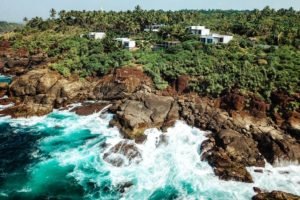
Minutes away from the hyped beach town of Unawatuna, lies the secluded Jungle Beach in Rumassala. The beach is hidden in the lush greenery offering striking views of the Rumassala forestry.
With soft sands and shallow waters, Jungle Beach is one of the most sensational stretches in Sri Lanka. It is a peaceful uncrowded spot ideal for swimming or even enjoying a picnic by the beach. After enjoying stunning seascapes, pop into a restaurant and dine on the catch of the day.
Do not forget to have a quick chat with a local if you are interested in exploring the mythical story behind the countless medicinal herbs still found on a hill in Rumassala. Hike up the Rumassala cliff to catch striking views of the Galle Fort. The sunset here is spectacular.
Getting there: It just a pleasant, hilly 2 km walk from Unawatuna (access by road is only via a side lane from the highway). You can also catch a tuk-tuk from Unawatuna.
Marble Beach
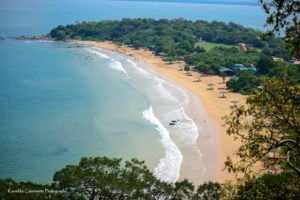
The waters at Marble Beach remain unbelievably calm and as clear as a shard of glass. The atmosphere here is so still that it gives you an illusion that you literally own it. The untouched, pristine beauty of Marble Beach makes it one of the best beaches in the country.
Nestled in Trincomalee, the sea here is home to large schools of tropical fish. Snorkeling is one of the famous activities at Marble Beach due to the fascinating sight of multi-coloured fish swimming in great doves. Go up the close by Diamond Hill to witness a mind-boggling panorama of the entire Trincomalee bay and beyond.
Getting there: Approximately 17 km south of Trincomalee, there is a turn-off on the left for Marble Beach. This is hard to miss as it is signposted just before the Kinniya bridge.
Red Dot’s Top 25 Places to Stay in Sri Lanka
After weeks of excitement and anticipation, today we present you the top five properties to stay in Sri Lanka. These hotel stays are utterly unforgettable- top-notch service, delightful dishes and jaw-dropping locations. There’s no wonder that these five properties are the ones that our guests loved most this year. So let us present Red Dot’s Best Places to Stay in Sri Lanka, without further ado. Read on and check whether your favourite is on the list.
Ceylon Tea Trails
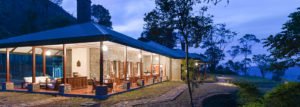
Dunkeld is one of five luxurious bungalow under the Tea Trails collection, perched high above the spectacular Castlereagh Lake near Dickoya and overlooking the lush green tea plantations of the Dunkeld Estate. It is a four-bedroom luxurious bungalow with a standalone cottage in Sri Lanka’s central highlands.
Clingendael
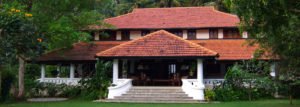
Clingendael is a luxurious five-bedroom villa situated in the Victoria Golf & Country Resort in Kandy, with magnificent views of the Victoria Reservoir and the golf course. Designed along the lines of a colonial-period Kandyan Wallauwa (ancestral house), this magnificent boutique hotel and villa exudes a stately grandeur yet is infused with cutting-edge technology. The creation of Clilngendael took five years with its Dutch owner painstakingly putting together original doors, windows, staircases, floorboards and furniture collected from old colonial houses. You don’t need to be a golfer to relish Clingendael’s terraced gardens, cascading waterways, verandas and tranquil setting.
The Dutch House
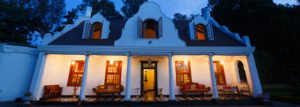
The Dutch House is perched on a hillock overlooking Sri Lanka’s southern highlands town of Bandarawela. This is a land of tea-covered hills, gushing waterfalls, mountain peaks and a fresher climate. This oft-praised boutique villa is set on a two-acre garden filled with fruit trees and flowering plants that attract many birds. It has reopened under new Sri Lankan owners who have created a distinct local feel with the use of antiques, art and soft furnishings. The villa has a satinwood and ebony staircase, boarded floors and a spacious verandah that lets you take in the mountainous scenery. It offers well-appointed bedrooms and an informal and relaxing ambience
Villa Talangama
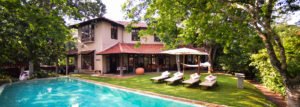
Villa Talangama has long been loved by Red Dot clients. It enjoys a quiet, unspoiled lakeside setting, seemingly a world away from the commercial heart of Colombo about half-an-hour away. The villa setting is best described as a `village in the city’ surrounded by paddy fields, lotus filled lakes and birds everywhere – perched on the veranda, flitting onto trees in the small and secluded garden, and even on the buffalo that relax on the lakeside and that provide a daily delivery of curd and treacle from the farmer next door. Villa Talangama is a meticulous Sri Lankan home.
Santana Wellness Resort And Spa

Santana Wellness Resort & Spa, one of Sri Lanka’s finest, promises to pamper the mind, body and soul in the comforts of the lush mountains in Digana. Spread across 48 acres of verdure overlooking the Knuckles and Hunnasgiriya mountain ranges, Santani is the perfect place to relax and take refuge from the chaos of day-to-day city life. The latest addition to the portfolio of wellness resorts in Sri Lanka, Santani specialises in ayurvedic treatments but also offers relaxation treatments
Camellia Hills
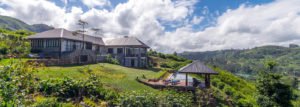
Overlooking the picturesque Castlereagh reservoir in Sri Lanka’s central highlands in Hatton, Camellia Hills is a modern tea bungalow that offers accommodation in five bedrooms. Decorated in soft colours and contemporary furniture, the villa is cosy and creates the perfect ambience for relaxation. The bungalow has been designed to provide guests with a spectacular view of the glass-like waters of the reservoir and surrounding tea plantation, whether you’re sitting in the spacious living area or enjoying a cup of tea in the balcony.
Wild Coast Tented Lodge
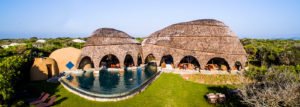
Wild Coast Tented Lodge ,located in the buffer zone of Yala National Park, is a luxurious campsite offering accommodation in 36 uniquely designed cocoons. It is the latest addition to Resplendent Ceylon’s collection of high-end hotels. Taking in natural colours and shapes of the area, this Relais & Châteaux resort is designed by a group of Dutch, English and Sri Lankan designers with the intention of seamlessly blending in man-made structures with the local landscape.
Kulu Safaris
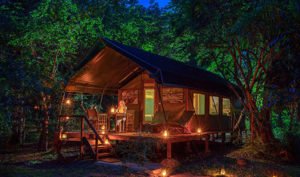
Kulu Safaris the pioneers of mobile tented safaris in Sri Lanka, are a respected wildlife company. Discuss your wildlife interests in advance and, whether birds, leopards or elephants, the Kulu team will personalise your game drives and take you on routes where you are more likely to see your favourite animals. The Kulu Safaris camping experience is highly recommended for nature lovers including families with children. Kulu Safaris follow a strict eco-friendly policy and avoids the use of plastics; uses solar energy for lighting and ensures that all waste material is removed from the campsite.
The Thinnai
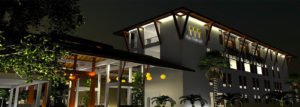
Situated in the quieter part of Jaffna town, The Thinnai is a 39-suite hotel with 58 bedrooms. The hotel is ideal for guests who are keen on exploring the Northern peninsula while enjoying modern day comforts. Thinnai which roughly translates to rest spot in English is inspired by the verandas found in traditional Jaffna houses which is commonly used by residents and visitors as a rest area where they can relax taking in the beauty of the garden while sipping a hot cup of tea.
Frangipani Tree
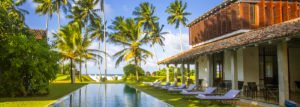
Frangipani Tree is a stylish, nine-bedroom boutique hotel by a secluded beach in Thalpe on Sri Lanka’s South Coast. Designed by Channa Daswatte, a protégé of Geoffrey Bawa, it is a tranquil and luxurious setting. Windows and verandahs that open onto the Indian Ocean, high-clay tiled roofs, cooling cement floors, courtyards with frangipani trees, white washed walls and interiors with contemporary timber and steel furniture make this a luxurious getaway. Sister property of Fort Printers in Galle’s 17C Dutch Fort.
Ulagalla Resort
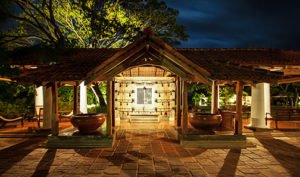
Ulagalla is one of Sri Lanka’s finest properties. This expansive holiday retreat spreads over 58 acres of lush woodland, paddy fields and the Ulagalla Reservoir in the rural village of Tirappane near Anuradhapura. Here is a resort that offers high levels of privacy. It was once the abode of a village chieftain. The original walawwa (ancestral mansion), which was built in 1885, still remains and has been renovated maintaining its traditional architectural features, and now houses the resort’s reception area. Accommodation is in luxurious villas scattered across the estate and overlooking paddy fields and reservoirs.
Taru Villas- Rock Villa
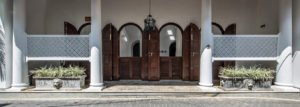
Taru Villas- Rock Villa is a fabulous 170-year-old Sri Lankan wallawwa with a fine reputation set on a two-acre coconut grove fronted by the spectacular sun-kissed beaches of Bentota, which are safe for swimming between December and April. This wonderful beach villa is is set back from the turquoise seas behind a 60 metre-wide growth of lush green mangroves and coconut palms providing much privacy. It is owned by Nayantara Fonseka (Taru), a renowned Sri Lankan lifestyle designer and creator of several other dream destinations on the island.
Villa Rosa
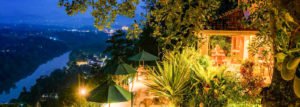
Villa Rosa is an enchanting guest house with great views over the Mahweli River close to the centre of Kandy. It offers excellent value and is a true taste of Sri Lankan living at its most serene, and has long been one of our favourite properties in Kandy. This charming little property has a subtle colonial flavour, a simple, intelligent ambience and a sense of shabby chic which is viewed with much affection by Red Dot travellers seeking to reconnect with life’s simple pleasures. More upmarket than a guesthouse, less style-obsessed than the more austere sections of the boutique market, Villa Rosa tempts you to relax outdoors on its private little patios and take in the soothing sights and sounds of the Mahaweli River below. Interior décor is simple and comfortable.
Chena Huts
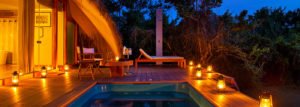
Chena Huts is an enchanting boutique hotel sprawled across seven acres of scrubland edged by the sea, just a five minute drive from the main entrance to Yala National Park.. The first boutique accommodation to be offered in the Yala area, Chena Huts is comprised of fourteen luxurious cabins, set apart from each other and shaded by trees to offer guests maximum privacy; a reception and dining area on the edge of the sea, and a pool and spa. The resort is innovatively designed: each building is in the style of a local village house, with a palm-thatched roof and artfully mottled walls, and winding wooden walkways lead between the cabins, surrounded on either side by the scrubland plants of the deep south.
Sri Sharavi Beach Villas
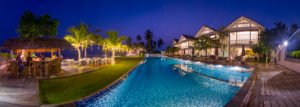
Sri Sharavi Beach Villas is a spick-and-span holiday retreat with a fabulous beachside setting in Mirissa on the South Coast. It consists of four well-appointed villas fronting a 45 metre swimming pool and the turquoise seas beyond, as well as two Garden Suites. These self-contained, two-storey villas are contemporary in design with bright and airy interiors, polished cement floors, high roofs, large windows that provides for spectacular sea views, and luxurious ensuite bedrooms. The villa butler offers a personalised service. A stay at Sri Sharavi is a relaxing and laidback holiday experience which is perfect even for families with children.
The Kings Pavilion
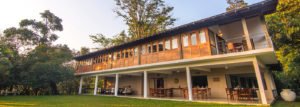
The Kings Pavilion is a nine-bedroom boutique hotel in a quiet residential area of Kandy, surrounded by greenery and birdlife, Kings Pavilion is a nine-bedroom boutique hotel. Spread across three acres with a large garden overlooking the Hunnasgiriya and Knuckles mountain range, this contemporary style hotel blends in seamlessly with its environment providing guests a comfortable place to relax.
Jetwing Vil Uyana
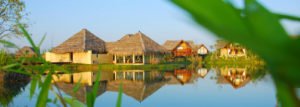
Vil Uyana is an ambitious and impressive development in Sri Lanka’s cultural triangle, more an exclusive rural holiday village than a hotel, and as such is highly recommended. Situated on extensive flatlands immediately to the west of the Sigiriya Rock, Vil Uyana – meaning a garden of ponds – is envisaged as a natural extension to the efforts of ancient Sinhala kings who developed and irrigated this area. Spread over 28 acres, at its heart is a wetland system consisting of paddy fields, marshes, and waterways reintroduced by the hotel. Individual dwellings, luxuriously appointed within, and blending seamlessly into the rural landscape, are located over lakes, marshes and paddy fields.
Aditya

Aditya is undoubtedly one of the finest beach side boutique properties in Sri Lanka. The Adityas is the common name for the 12 sun gods, said to dwell in the highest heavens. It is an appropriate name for a wonderful property designed both to de-stress and exhilarate. Aditya is designed with indoor gardens, waterways, and terraces with fine sea views. Refined interiors are stylishly decorated with art and antiques from Sri Lanka and further a field.
Amangalla

Amangalla takes pride of place within the ramparts of the 17C Galle Fort. Owned by the exclusive Aman group, it offers the most refined accommodation in Galle, its colonial-style buildings looking down soberly on the activity below. It consists of an amalgamation of buildings dating back over 400 years, once used as an HQ for the Dutch commander and his officers in the 17C and later as a billet for British soldiers. In 1865, the New Oriental Hotel was born and in its heyday on either side of the Second World War there were no more sought-after or daring parties in Sri Lanka. Aman Resorts then undertook a sensitive and complete refurbishment. From the day it opened, in 2005, it has offered excellent old-world luxury, superb food, arguably the best spa in the island and exceptional service.
Kahanda Kanda

Kahanda Kanda is a luxurious ten-bedroom boutique villa within easy reach of Galle, set on a 10-acre tea estate with views of the Koggala Lake in the distance. The tranquil setting is ideal for a relaxing holiday or even a romantic honeymoon. Beaches are beaches anywhere in the world but it is often said that the interior of a country is where the true spirit lies. Sri Lanka is no different and Kahanda Kanda provides the perfect example. Set on a hill amidst a working tea estate which slopes down to the Koggala Lake at one end, this stylish villa was built in 2000 as a private villa and is now an award-winning boutique hotel.
Fort Bazaar
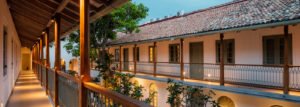
Fort Bazaar, which enjoys a prime position in Galle Fort, is a handsome 18-room luxury boutique hotel that was once a merchant’s house. Inspired by Portuguese heritage, this Sri Lanka heritage hotel is fast becoming one of the must-see places in the fort. Tiled with handmade Vietnamese floor tiles and cosy yet stylish furnishings, Fort Bazaar is one-of-a-kind. The 18 rooms at Fort Bazaar are categorised into 11 Bazaar Bedrooms, 4 Banyan Bedrooms, 3 Upper Suites, with an additional loft room.
The kandy House
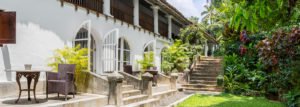
The Kandy House is a highly-sought after old colonial ‘Walauwa’ (ancestral mansion) in the spice-growing hills that surround Kandy. Its completion heralded what Sri Lanka’s hill-country-capital had been waiting for so long: a brilliant small boutique hotel capable of offering stylish and private accommodation and attentive personal service in a beautiful natural setting. The inspired refurbishment, with its white interiors, polished hardwood floorboards, jackwood staircase, Dutch-style antique furniture and careful injections of colour, has been a triumph. Channa Daswatta, one of Geoffrey Bawa’s protégés and Sri Lanka’s leading modern architects, provided the creative inspiration. The bedrooms are unquestionably the finest in Kandy.
Tri Lanka
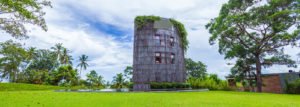
Tri Lanka surrounded by artfully-landscaped, lush greenery and positioned on the edge of spectacular Koggala Lake, is a haven for the mind, body and soul. Designed by award-winning architect Raefer Wallis and photographer Rob Drummond, Tri is a celebration of sustainability creatively combined with the ancient Greek mathematical theory of the golden ratio, a theory of design which creates shapes that the eye sees as perfectly beautiful. It is an ideal property for relaxation and escape and can be accessed by boat, which increases the feeling of worldly-detachment that you find at this retreat.
Living Heritage

Living Heritage is an exceptional property in a gorgeous setting on the fringes of Sri Lanka’s southern highlands. Much of the estate is untouched wilderness that attracts numerous birds, monkeys, deer and even the occasional elephant. Misty mountain peaks of the southern highlands form a beautiful backdrop. Living spaces are spread across a hillside with the accommodation at the top of the hill and dining and lounging areas below. The peaceful infinity swimming pool is a short stroll away. Living Heritage emphasises Kandyan architecture.
Sri Lanka opens third international airport
Sri Lanka opened its third international airport yesterday, paving the way for travellers to fly into the Northern Peninsula of the island.
An ATR 72-600 aircraft carrying the Air India Chairman and Alliance Air CEO amongst other staff and journalists, was welcomed at the Jaffna International Airport (JIA) with a water salute and great enthusiasm for the possibilities ahead.
The JIA was previously known as Palaly Airport and was primarily used as a military airbase and for domestic flights. Further construction is due to take place over two more phases with the next three months focusing on extending the current runway. The final phase will see the runway extended to allow JIA to handle larger aircraft.
Commercial flights from Chennai to Jaffna are due to start on the 1st of November this year, with plans of covering Batticaloa on Sri Lanka’s East Coast as well. Air India has also been permitted to fly from Jaffna to Colombo, although it is unsure when they will start.
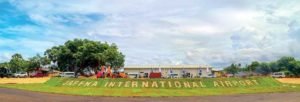
Almost all international flights currently operate via the Bandaranaike International Airport which is closer to Colombo, so the hope is that the JIA will be able to reduce the crowds at BIA, while also reducing road travel time for tourists.
Sri Lanka set to transform tourism industry
Batticaloa Domestic Airport to be upgraded as tourist numbers start to rise again
Over the past decade, tourism has been the fastest growing industry in Sri Lanka. The island was one of travel’s best kept secrets for many years, but word slowly started to spread and the 2010s saw a huge influx of visitors to the island, driven by the likes of Lonely Planet who branded Sri Lanka as ‘the world’s hottest travel destination’ in 2017. Even with the tragic events of Easter Sunday 2019, which significantly reduced tourist numbers last year, just a few weeks ago Sri Lanka was named one of the best places to visit in 2020 by Condé Nast Traveller.
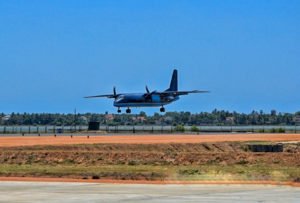
As a country largely dependent on tourism, Sri Lanka has always been conscious of attracting visitors to the island – not that they need much persuasion beyond the beautiful beaches, incredible wildlife and dynamic culture – and the government has taken multiple measures over the years to ensure that the country can cater for the needs of its tourists. These measures range from building more hotels to improving road infrastructure, with the latest development plan being the expansion of Batticaloa Airport.
Batticaloa Airport is currently only set up for internal flights, serving domestic airlines such as Cinnamon Air, but at the start of the new year the local government announced plans to upgrade Batticaloa to international standards. Arjuna Ranatunga, Minister of Transport and Civil Aviation, believes that this will help improve the tourism industry by reducing the crowds at Bandaranaike International Airport and reducing road travel time for tourists. Sri Lanka currently has three international airports, the most recently opened being Jaffna, which paved the way for travellers flying into the northern peninsula of the island.
Yoda Ela – An Ancient Engineering Marvel
Ancient Sri Lankans are celebrated for their indigenous knowledge in irrigation. Irrigation systems of ancient Sri Lanka consist of a large number of village tanks, gigantic reservoirs and an intrinsic network of water canals connecting these tanks while supplying water to farming land.
Despite the abundance of irrigation constructions in Sri Lanka, Yoda Ela or Jaya Ganga, an 87 km long water canal carrying excess water from Kala Wewa in Polonnaruwa to ThissaWewa in Anuradhapura, is a construction dependent on remarkable instrumentation precision.Its gradient of10 to 20 cm per kilometre still baffles experts today for its minute precision.
Built during the regime of King Dathusena in fifth century AD, who also sponsored the construction of Kala Wawa reservoir, Yoda ela was constructed to convey excess water from Kala Wawa in Polonnaruwa to Thissa Wawa reservoir in Anuradhapura.
However the ancient engineering methods in calculating the exact elevation of the Kala Wewa against ThissaWawa and the exact gradient of the canal to such fine precision had been lost with the fall of the civilisation.
Moreover the ingenuity of ancient engineers is also exhibited in how Yoda Ela was designed as an elongated reservoir, which passes through traps creating sixty six mini-catchments as it flows from Kala Wawa to Thissa Wawa. The canal was not designed for the quick conveying of water from Kala Wawa to Thissa Wawa but to create mass of water between the two reservoirs, which would in turn provided for agriculture and the use of humans and animals.
Another unique feature of the Yoda Ela is that the canal has only one bund to manage the canal pressure with the influx of water. Two bunds would have increased the pressure causing damage while with one bund the water spreads on the upper side and releases the pressure creating no danger to the bund. Built along the contours the canal collects and dispenses water throughout its 87 km flow length.
Many a features had been added to the canal since its construction. King Parakramabahu who governed the country nearly 700 years after the Yoda Wawa, reconstructed the canal added more feeders to the canal starting from thirty four reservoirs found between Kala Wawa and Thissa Wawa, re-naming it Jaya Ganga or the river of victory.
The extra water from these tanks would be fed to the canal which would distribute it in an area of 180 square miles feeding 11,400 acres of paddy lands and 120 small tanks.
However part of this ingenious creation was destroyed during the attempts to create a second Jaya Ganga under the Mahaweli Development Project causing dearth of water to some parts of the dry zone while measures are now been taken to reverse the damage done to an engineering marvel of ancient Sri Lanka.
The Stargate at Ranmasu Uyana
The Stargate at Ranmasu Uyana – Remnants of a Lost Civilization?
Sandwiched between the Thissa Wewa reservoir and the Isurumuniya Rock Temple, RanmasuUyana of Anuradhapura, a forty acre pleasure garden of the ancient Sri Lankan royals is a unique creation.
The Ranmasu Uyana was mainly known for its rock sculpted bathing ponds with a sophisticated hydraulics mechanism. A subtle use of pressure difference enables the pumping of water from the nearby Tissa Wewa to the swimming pools of the garden. The pools themselves display a clever use of technology and craftsmanship, in constructing a flawless luxury swimming facility nearly three thousand years ago.
However the true wonder of RanmasuUyana is found among the rock boulders and caves away from the pools. Carved on a stone wall is a strange map like chart known to many as the ‘stargate’. A stargate is believed to be a gateway between the earth and the outer space, through which humans allegedly roamed the universe communicating and engaging with other intelligent beings in the universe. This chart is believed to be the secret code to accessing the stargate. Facing the stargate marking are four seats, which implies that it was a chart, which could be used or manipulated by four individuals.
The discovery of the stargate marking had created waves amidst archaeologists and pre-historic investigators, some drawing parallels between the stargate charts found in Abu Ghurab in Egypt and ‘the gate way to the gods’ in Peru. The bizarre coincidence of all the three marks been found in the vicinity of a water way, with sophisticated engineering methods, had given rise to various theories.
Stargate at Ranmasu Uyana in Sri Lanka

Stargate at Peru
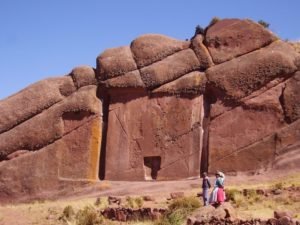
Stargate at Abu Ghurab in Egypt
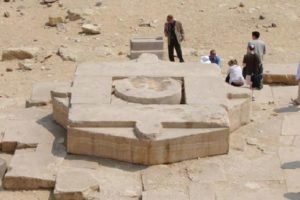
The most favourite is the claim that these stargates were used by extraterrestrials that were gold mining in Earth. Their theory is built up on the fact that in 2400 BC the stargate in Abu Ghurab Egypt was surrounded by water while” La Puerta de HayuMarka.” Or “The Gateway to The Gods” in Peru too is built closer Lake Titicaca, with underground water tunnels and chambers beneath the pyramids.
The advocates of the ‘processing gold from the waters of Earth’ theory believes that these water channels, chambers, reservoirs and filters found near each stargate to have been a part of a sophisticated mechanism developed by extraterrestrials thousands of years ago.
If the theory is held to be true, RanmasuUyana had once been a ‘gold processing center of extraterrestrials’, which arrived on earth through stargates.
Yet archaeologists are eager to discard these theories as pure imagination. According to the earliest archaeologists and historians the charts could have been a descriptive chart of the universe according to Buddhism or a simple map of the earth. At later stages the historians have interpreted them as descriptions of animal evolution or as the way Tantric Buddhist monks perceived the world. It is believed that they used them for meditation purposes as well.
Present day archaeologist abhor the thought of comparing Egyptian civilisation with the Sri Lankan civilisation, insisting that ours is a unique island civilisation pure of Egyptian or Babylonian influence.
Whatever their initial use may have been, the interpretations provided for these markings varies from a secret key to space travelling to the floor plan of Sigiriya, a rock garden found closer to Anuradhapura. Yet the only fact about these charts is that despite various claims and arguments, we are nowhere near to understanding them or knowing their sources.

